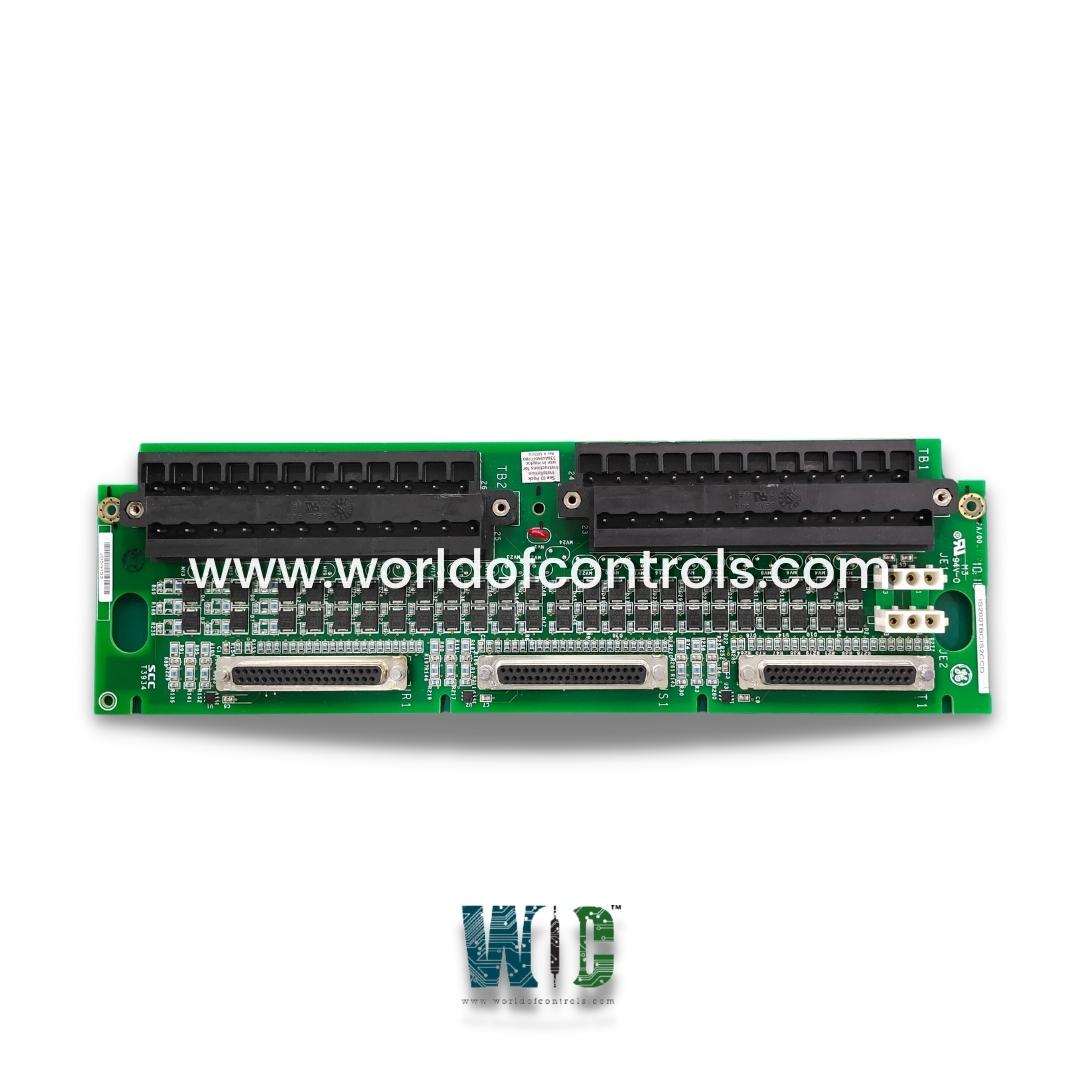
World Of Controls understands the criticality of your requirement and works towards reducing the lead time as much as possible.
IS200TBCIS3C - Contact Input with Group Isolation Terminal Board is available in stock which ships the same day.
IS200TBCIS3C - Contact Input with Group Isolation Terminal Board comes in UNUSED as well as REBUILT condition.
To avail our best deals for IS200TBCIS3C - Contact Input with Group Isolation Terminal Board, contact us and we will get back to you within 24 hours.
SPECIFICATIONS:
Part Number: IS200TBCIS3C
Manufacturer: General Electric
Series: Mark VIe
Product Type: Contact Input with Group Isolation Terminal Board
Number of channels: 24
Excitation Voltage: 125 V dc
Power supply voltage: 28 V dc
Voltage Range: 14 to 32 V dc
Input Filter: Hardwire Filter, 4ms
Power Consumption: 20.6 W
Mounting: DIN-rail mounting
Technology: Surface mount
Operating temperature: -30 to 65°C
Size: 33.02 cm high x 17.8 cm
Repair: 3-7 Day
Availability: In Stock
Country of Origin: United States
Manual: GEH-6721_Vol_II
FUNCTIONAL DESCRIPTION:
IS200TBCIS3C is a Contact Input with a Group Isolation Terminal Board manufactured and designed by General Electric as part of the Mark VIe Series used in GE Distributed Turbine Control Systems. The Contact Input with Group Isolation (TBCI) terminal board accepts 24 dry contact inputs wired to two barrier-type terminal blocks. For contact excitation, dc power is wired to TBCI. The contact inputs have noise suppression circuitry to protect against surge and high-frequency noise. Some panels contain a mixture of ac and de-wetting voltages. Care must be taken to avoid connecting the ac wetting voltages to the terminal board wetting voltage inputs because this causes misoperation and can damage these terminal boards. Furthermore, verify that the ac wetting voltages and the DC wetting voltages are not inadvertently cross-connected because this causes misoperation and can damage the terminal boards.
COMPATIBILITY:
The TBCI works with the PDIA I/O pack and supports simplex, dual, and TMR applications. One, two, or three PDIAs can be plugged directly into the TBCI. The Mark VIe control requires the C version of this board for the correct mechanical alignment of connector JT1 to the I/O pack mechanical support.
INSTALLATION:
Connect the wires for the 24 dry contact inputs directly to two I/O terminal blocks on the terminal board. These blocks are held down with two screws and can be unplugged from the board for maintenance. Each block has 24 terminals accepting up to #12 AWG wires. A shield terminal strip attached to the chassis ground is located immediately to the left of each terminal block. In a simplex system, connect the TBCI to the PDIA I/O pack using connector JR1. In a TMR system, connect TBCI to the three PDIAS using connectors JR1, JS1, and JT1. The PDIAS plug into TBCI and attach to side-mounting brackets. One or two Ethernet cables plug into the I/O pack. Firmware may need to be downloaded. Connect TBCI to the contact excitation voltage source using plugs JE1 and JE2.
OPERATION:
Filters reduce high-frequency noise and suppress surgeon input near the point of signal entry. The dry contact inputs on TBCI_1C are powered from a floating 125 V dc (100-145 V dc) supply from the turbine control. The 125 V dc bus is currently limited in the power distribution module before feeding each contact input. The H2, H3, and H4 versions use lower voltages (refer to the section, Specifications). The discrete input voltage signals pass to the PDIA I/O pack, which sends them through optical isolators providing group isolation and transfers the signals to the Mark VIe controller.
The reference voltage in the isolation circuits sets a transition threshold equal to 50% of the applied floating power supply voltage. The tracking is clamped to go no less than 13% of the nominal rated supply voltage to force all contacts to indicate open when the voltage dips below this level. A pair of terminal points is provided for each input, with one point (screw) providing the positive dc source and the second point providing the return (input) to the board. The current loading is 2.5 mA per point for the first 21 inputs on each terminal board. The last three have a 10 mA load to support the interface with remote solid-state output electronics. Contact input circuitry is designed for NEMA Class G creepage and clearance.
WOC has the largest stock of OEM Replacement Parts for GE Distributed Control Systems. We can also repair your faulty boards and supply unused and rebuilt boards backed up with a warranty. Our team of experts is available round the clock to support your OEM needs. Our team of experts at WOC is happy to assist you with any of your automation requirements. For pricing and availability on parts and repairs, kindly contact our team by phone or email.
What is a Contact Input with the Group Isolation Terminal Board?
A contact input with a group isolation terminal board is an electrical component used in control systems to manage multiple input signals, such as from switches or sensors while providing electrical isolation between different groups of inputs. This helps prevent interference and ensures signal integrity.
Why is group isolation important in a terminal board?
Group isolation is important because it prevents electrical interference and cross-talk between different groups of input signals. This ensures that a fault or signal issue in one group does not affect other groups, thereby maintaining the overall reliability and accuracy of the control system.
How many input channels can a typical terminal board handle?
The number of input channels a terminal board can handle varies depending on the specific design and model. Some boards can accommodate a few inputs, while others can handle dozens. It's important to choose a board that meets the needs of your specific application.